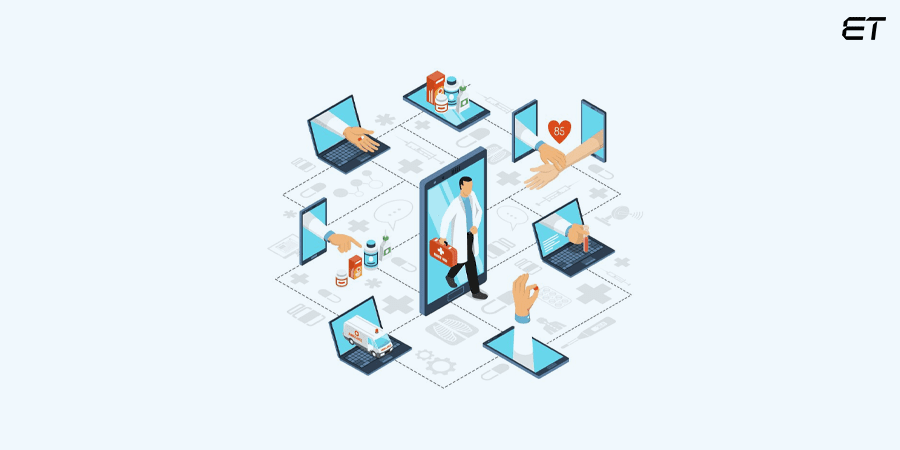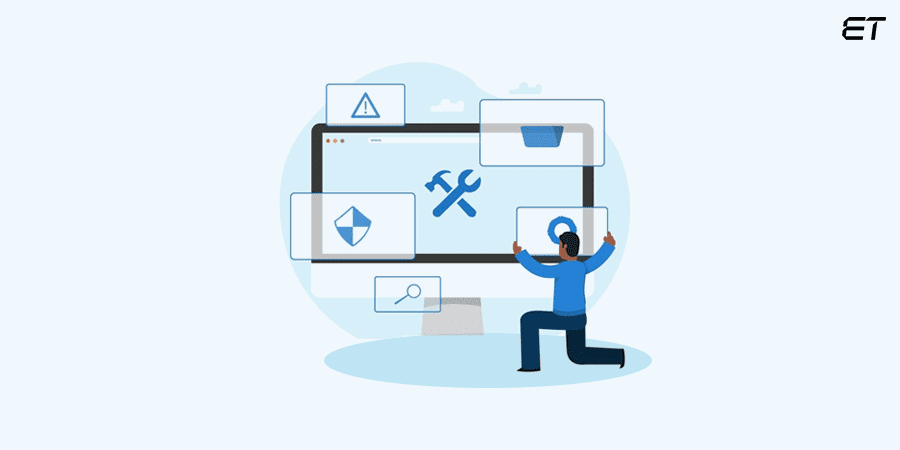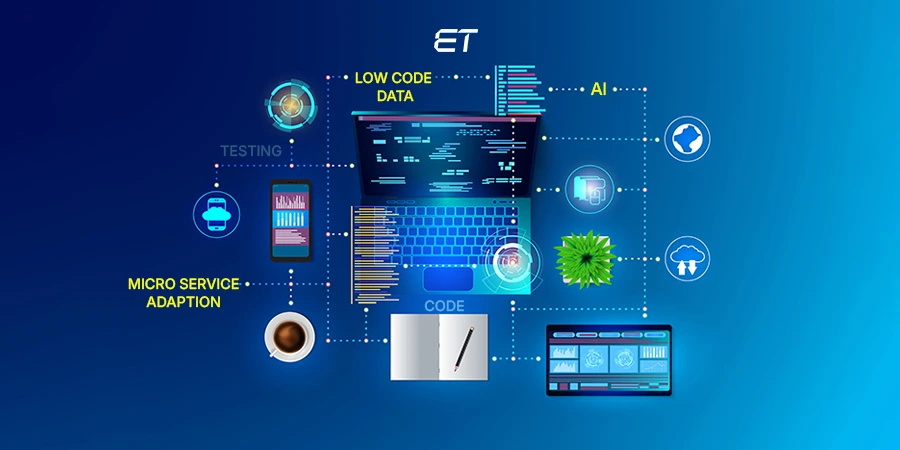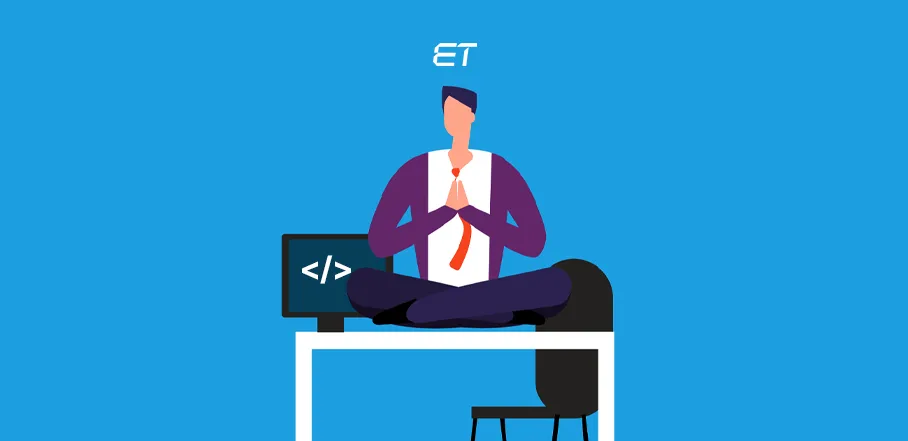
Performing EHR Integration: Steps and Tips
Since 2015, EHR integration and adoption have been on the rise, especially in America. Now, you must be thinking, ‘well, this is just a generic statement. Any proof to back up the claim?’
So, here’s the source – The Office of the National Coordinator for Health Information Technology (ONC). Their survey shows that nearly 78% of US-based physicians have embraced a certified electronic health record (EHR).
Now, if you work in the healthcare domain, knowledge of EHR integrations can prove vital.
How?
Well, this information can facilitate better decision-making when you search for an IT vendor who performs integrated EHR development.
Scroll below to understand the main steps in EHR integration, followed by some handy tips.
What is EHR Integration?

First things first.
As a decision-maker or professional in the healthcare domain, you should be aware of the following points:
- Electronic health record (EHR) is a vital system that stores patient information and improves the efficiency of healthcare workers
- You can connect these systems with other healthcare software applications through the process of EHR integration
So, through this process, you can schedule appointments, sync lab and imaging results, and utilize software like telehealth platforms.
In short, EHR integration is an essential process if you already have a custom system in place.

Why is EHR Integration Important?
You must be working in the healthcare sector for one or more of the following reasons:
- To help patients and improve their lives
- For job security and competitive salaries
- To thrive in a sector full of intellectual challenges
- For leveraging flexible work options and different work schedules
On the contrary, if you’re a healthcare organization, serving people and capitalizing on the fast-growing market might be the main motives.
Despite the reasons, one thing is universal – you must adopt technology solutions to meet these objectives. EHR integration is one such process that you can perform.

This activity can offer the following benefits:
- Enhanced patient care: By integrating various data sources, you can gain a holistic view of a patient’s medical history, which includes allergies, medications, past procedures, and lab results from different providers. Also, EHR integration eliminates the need for manual data entry in different systems
- Increased productivity: EHR integration automates tasks like appointment scheduling, lab order processing, and medication refills. So you have more time to focus on patient interaction
- Rise in patient engagement: The integration process can streamline communication channels between patients and providers, allowing for easier appointment scheduling, prescription refills, and secure messaging
- Improvement in public health reporting: Seamless data exchange through EHR integrations facilitate efficient reporting of public health concerns and disease outbreaks to relevant authorities
Overall, these solid reasons are enough to drive healthcare organizations into action mode.
Common Steps Involved in EHR Integration
EHR integration is a multi-stage activity. This statement implies that you can divide the entire cycle into distinct segments as follows:
- Planning
- Implementation
- Testing
- Maintenance
So, outsourcing EHR software development is a no-brainer if you are from a non-technical background. In that case, you can show less involvement in the implementation and testing phases.
However, if you have technical know-how, it would also be interesting to converse with these steps. Scroll ahead to get some quick, practical insights.
1. Planning

The first step involves recognizing what you want to achieve with the integration.
Are you aiming to improve care coordination, streamline workflows for specific tasks, or facilitate data analysis for population health?
You should clearly define such goals to guide the technical approach and functionalities necessary for the EHR integration. Further, you should assess your existing IT infrastructure and the capabilities of your current EHR system.
This evaluation helps identify compatibility issues and potential gaps to address during integration. Finally, you should select appropriate data exchange protocols to ensure smooth communication between your system and the EHR.

Interested in integrating your EHR into existing software? Contact our team today!
2. Implementation

Under this stage, API configuration becomes a vital step.
So, what should you look for?
It is a good idea to work with your EHR software development vendor to obtain API credentials. These IDs act as secure gateways that allow your system to connect and exchange data with the system.
Next, you should perform data mapping to define how data elements in one system correspond to those in the other. This process ensures accurate and consistent data transfer. Finally, you can develop custom software connectors within your system to handle data exchange with the EHR software. It is crucial to understand that some EHR software development vendors offer pre-built connectors that can streamline this process.
3. Testing

Before full deployment after EHR integration, rigorous testing is vital to ensure flawless functioning. This process involves the verification of the following aspects:
- Data accuracy
- System security
- Workflow efficiency
Ideally, your test scenarios should cover various functionalities and potential error situations.
What’s more?
You can consider a gradual rollout to a limited user group for initial testing and feedback. This way, you can find and solve any issues before deploying it widely across the healthcare organization.

4. Maintenance

What’s one clear facet that holds the key to success in today’s age?
It is ‘data.’
In EHR integration, robust data security protocols are paramount to safeguard sensitive patient information during transfer and storage. This activity includes implementing encryption methods and access controls to prevent unauthorized entry.
Finally, the maintenance phase includes regularly monitoring for errors or performance issues. You should schedule updates and maintenance to ensure continued seamless operation. Remember, new software versions or security patches might require adjustments to the EHR integration.
Challenges That You Might Face During EHR Integrations

This section can be a separate blog post. EHR integration challenges fall into various categories. However, we will provide just the right amount of details for your perusal.
Technical Challenges
EHR integration can face various technical hurdles as below:
- Issues in interoperability: Lack of standardization can make seamless data exchange difficult
- Complexity in data mapping: Mismatches in data structures can lead to errors and inconsistencies
- Challenges in API configuration: Organizations with limited IT resources can find it difficult to configure APIs
However, you can overcome these challenges by partnering with a competent software development agency.
Economic Challenges
The cost of EHR integration can seem unreasonable for some healthcare organizations. Why?
Well, you have to incur development, licensing, and maintenance fees.
In addition, implementing a successful EHR integration takes time for planning, development, testing, and staff augmentation. There can be disruptions to daily operations during this period. All these factors can lead to an indirect rise in operational costs.
Workflow Challenges
Integrating a new system can disrupt your existing workflow. Furthermore, you must train your staff to adapt to new processes and functionalities.
In some cases, EHR integrations might lead to additional documentation tasks for healthcare providers. This clerical work can impact their productivity until they adjust to the new electronic health record system.
Tips for Seamless EHR Integration
Now, challenges are always inevitable when you desire to adopt a new technology, right?
As an optimistic professional, overcoming these hurdles and planning for a successful EHR integration are vital. In this section, we offer some practical tips for connecting your EHR system seamlessly.
Tip #1: Pay Proper Attention to the Tech Side

This suggestion is a no-brainer, right?
You must ensure proper tech stack selection for fluent EHR integration. In addition, it is vital to select well-established data exchange protocols like HL7 or FHIR to ensure smooth communication between your system and the electronic health record.
Partnering with a reliable software development vendor is crucial for establishing API configuration and data mapping plans.
Tip #2: Involve All Stakeholders

Clinicians, nurses, IT staff, decision-makers, and administrators – these professionals define your EHR integration’s success.
Focus on understanding their needs and workflows to ensure the integration addresses their pain points and is ergonomic. Remember, for complex EHR integrations, consider partnering with an experienced IT specialist who can handle the technical aspects and ensure compatibility.
Tip #3: Test and Train Rigorously

Before full deployment, you should conduct comprehensive testing to verify data accuracy, security, and workflow efficiency.
Also, adequate staff training on the new functionalities and workflows that result from EHR integration is essential. This activity minimizes disruptions and ensures user adoption.
After all, you would always prefer a happy workforce after completing the integration phase, right?
Tip #4: Communicate and Streamline Your Processes

EHR integration can become successful if you maintain clear communication with your IT vendor for support and troubleshooting.
So, what can you do in this case?
Arrange online meetings and exchange constant messages about the progress of the integration activity. Also, you should develop change management strategies, such as training, communication plans, and addressing staff concerns, for a streamlined workflow.
In a Nutshell
Integrating electronic health records with other relevant software offers several benefits to your organization. A systematic EHR integration can enhance patient care, improve efficiency, and boost patient engagement in various ways.
However, to experience the benefits of integrated EHR, you should follow the ‘PITM’ process — plan, implement, test, and maintain.
The success of EHR integrations depends heavily on the choice of your IT vendor. It is crucial to partner with a company that has experienced developers and a portfolio of multiple healthcare projects.
This way, you can tackle all the challenges and enhance your healthcare delivery significantly. If you want to reduce the hassle of shortlisting potential EHR software development vendors, we can be a great fit.
Our developers are well-versed in using various trending technologies and have experience working with global businesses. What’s more – our team has an exciting portfolio of healthcare solutions and can fluently handle complex EHR integration needs. So, contact us to discuss your integration requirements today!
Frequently Asked Questions
1. What is the meaning of fully integrated EHR?
A fully integrated EHR implies a system that exchanges data bidirectionally with other healthcare software. Epic, Cerner, and Meditech are some popular names in this segment.
2. What are the main components of an EHR system?
The main components of an electronic health record system are patient management, CDSS, an order entry system, a patient portal, secure messaging, and a clinical data repository.
3. How can I handle missing data during EHR integration?
To handle data loss during EHR integration, you should develop data imputation strategies. These tactics include regression imputation, KNN imputation, EM algorithm, and mean/median/mode imputation.





